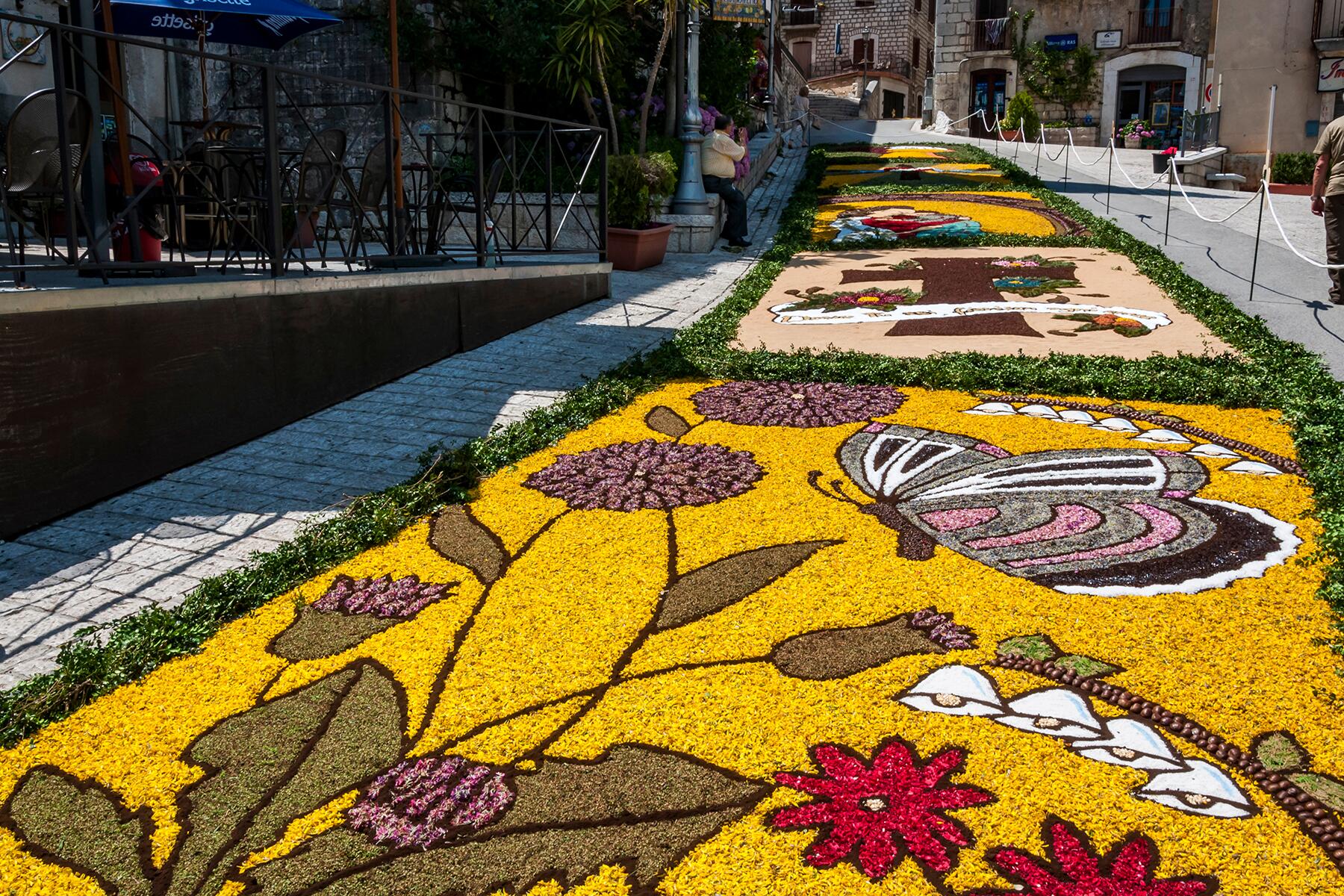Floral fantasies in Italy.
In a wonderful custom whose origin is a 13th-century miracle, many small towns in Italy make tapestries from thousands of flowers to cover their streets for the Feast of Corpus Domini, nine Sundays after Easter. The sheer artistry is astounding: reproductions of famous Renaissance paintings, religious and modern scenes, local architecture, geometric, abstract, flora and fauna patterns. Locals lovingly create flower carpets from petals, or whole flowers for a striking 3-D effect, and other natural materials, marking borders with soil or coffee grounds. Ornate chalk designs, often planned months in advance, are drawn on the street in the infiorata, which means “decorated with flowers.” A procession led by the local priest or bishop then walks the carpets on the feast day, which is generally in June, sometimes in May. Afterward, children are invited to play on and destroy the carpets, called the spallamento. Poof! The gorgeously photogenic carpets are gone—until next year.
“This tradition is very strong in the center and south of Italy, where people are more religious and connected to local traditions,” says Claudia Fanini of The Italian Planners, a travel and event firm in Milan. “In southern Italy, local celebrations are part of people’s identity and territorial heritage.” Some towns have celebrated the tradition for decades; one, in particular, for almost 250 years. Here are 12 towns to look for. (Due to COVID, check to confirm they’re still on in 2021.)





